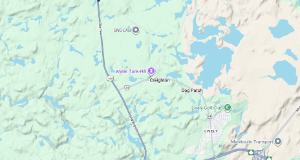The political theatre that overshadowed the delivery of the budget may have helped insulate the government from a more complete reaction to what has been described as an unfocussed attempt to shore up support without allocating enough resources to move important issues toward resolution. Lost in the commotion was the fact that this is a disappointing budget for Canadians who need help right now to make ends meet.
For Northern Ontario there are few specifics but what jumps of the page is the tiny sum of $6 million allocated to our regional development agency, FedNor. If the government were pulling back on investments through these agencies entirely it might not stick out, but the Atlantic and Northern agencies received $67 million and $95 million respectively. It begs the question, does the government have a vision when it comes to developing Northern Ontario’s economy? What is welcome is the money set aside for forestry, but the details of that aren’t spelled out and it remains to be seen exactly how much Northern Ontario will see.
Underfunding is a common theme on issues that will make a difference to First Nations. There is less money for Jordan’s Principle than what the experts deemed was necessary. The money set aside for on-reserve water infrastructure the investment over the next five years doesn’t come anywhere near the $2.5 billion the Parliamentary Budget officer said was needed modernize and repair this critical infrastructure. There’s no new core funding for on-reserve primary and secondary education and no new funding for on-reserve housing, despite urgent needs and enormous backlogs for repair, construction, or mould detection and remediation.
Some of the headlines this week made it seem that seniors on the Guaranteed Income Supplement will be allowed to work without a financial penalty, but that isn’t entirely true. The benchmark for claw-backs has gone up, but there will still be claw-backs and it doesn’t address the bigger problem which is that so many seniors are struggling in retirement. The same can be said for the increase in GIS top up payments which could be as much as $80 a month. It’s a start, but the government could have done much better. In the last campaign, New Democrats proposed an increase that would have lifted 200,000 seniors out of poverty with a more robust GIS. According to projections in the budget, the government’s increase will help about a quarter that number.
Infrastructure remains a priority for many Canadians and there is money in this budget that will not be parsed through the Infrastructure Bank, which is welcome news. A former assistant to the Parliamentary Budget Officer remains concerned however, that infrastructure spending has been relatively haphazard and mostly driven by political expediency. He says the government still hasn’t created a national infrastructure program, or clearly defined why they are spending in any region or on specific projects.
Perhaps the biggest disappointment was that there was nothing to move us toward a universal publicly delivered pharmacare program in the budget. Even Conservatives are agreeing with New Democrats that what was included in the budget will not deliver on pharmacare. That money is only going to create an agency that will replace the current two agencies in approving drugs and their pricing. Pharmacare has the potential to transform the lives of millions of Canadians who struggle to afford the medication they need. What is clear from the budget, is that those who struggle will continue do so.
- Reflecting on the Challenges and Accomplishments of 2024 - December 19, 2024
- Carol Hughes – CRA Hack Needs a Thorough Investigation - November 13, 2024
- Carol Hughes – Is it Time to Get Tougher on Residential School Denialism? - November 5, 2024
 Wawa-news.com Local and Regional News
Wawa-news.com Local and Regional News
